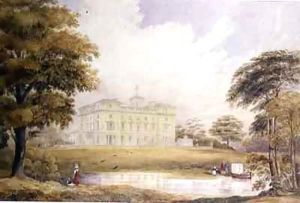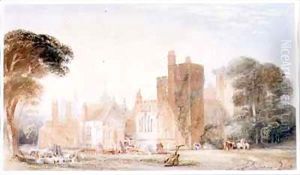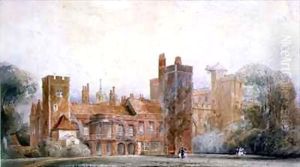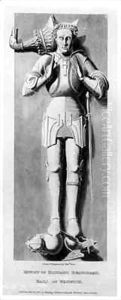Edward Blore Paintings
Edward Blore was a notable British architect, landscape designer, and antiquary of the 19th century, recognized for his work on the restoration and renovation of historic buildings, as well as for designing new structures in the Gothic Revival style. Born on September 13, 1787, in Derby, England, Blore began his career with a strong interest in antiquarian pursuits, which deeply influenced his architectural style.
Blore's initial claim to fame was his work on the illustrations for the antiquarian publication, 'The History of the Antiquities of the Abbey Church of St. Peter, Westminster', which included a series of engravings. His dedication to the details of medieval architecture in these illustrations helped establish his reputation as a Gothic Revival architect, a style that was increasingly popular in the early 19th century.
His architectural career took a significant leap forward when he was commissioned to complete the work on Buckingham Palace, after the death of the original architect, John Nash. Blore was responsible for designing the east front of the Palace, which is the public face of Buckingham Palace today and includes the famous balcony from which the royal family acknowledges the public on ceremonial occasions. He also worked on other royal projects, including alterations and additions to Windsor Castle.
Beyond his royal commissions, Blore carried out numerous other architectural projects. He worked extensively on restoring and designing churches, as well as working on country houses. His international commissions included work in Russia for Tsar Nicholas I, where he designed the Grand Kremlin Palace in Moscow, among other projects.
Despite the success he enjoyed during his lifetime, Edward Blore's work fell out of fashion following his death on September 4, 1879. The Victorian Gothic style, which he had helped to popularize, was no longer in vogue and was often criticized for its lack of authenticity and excessive ornamentation. However, his contributions to the field of architecture, particularly in the realm of Gothic Revival and historic restoration, were significant, and many of his buildings are now listed as heritage sites.



